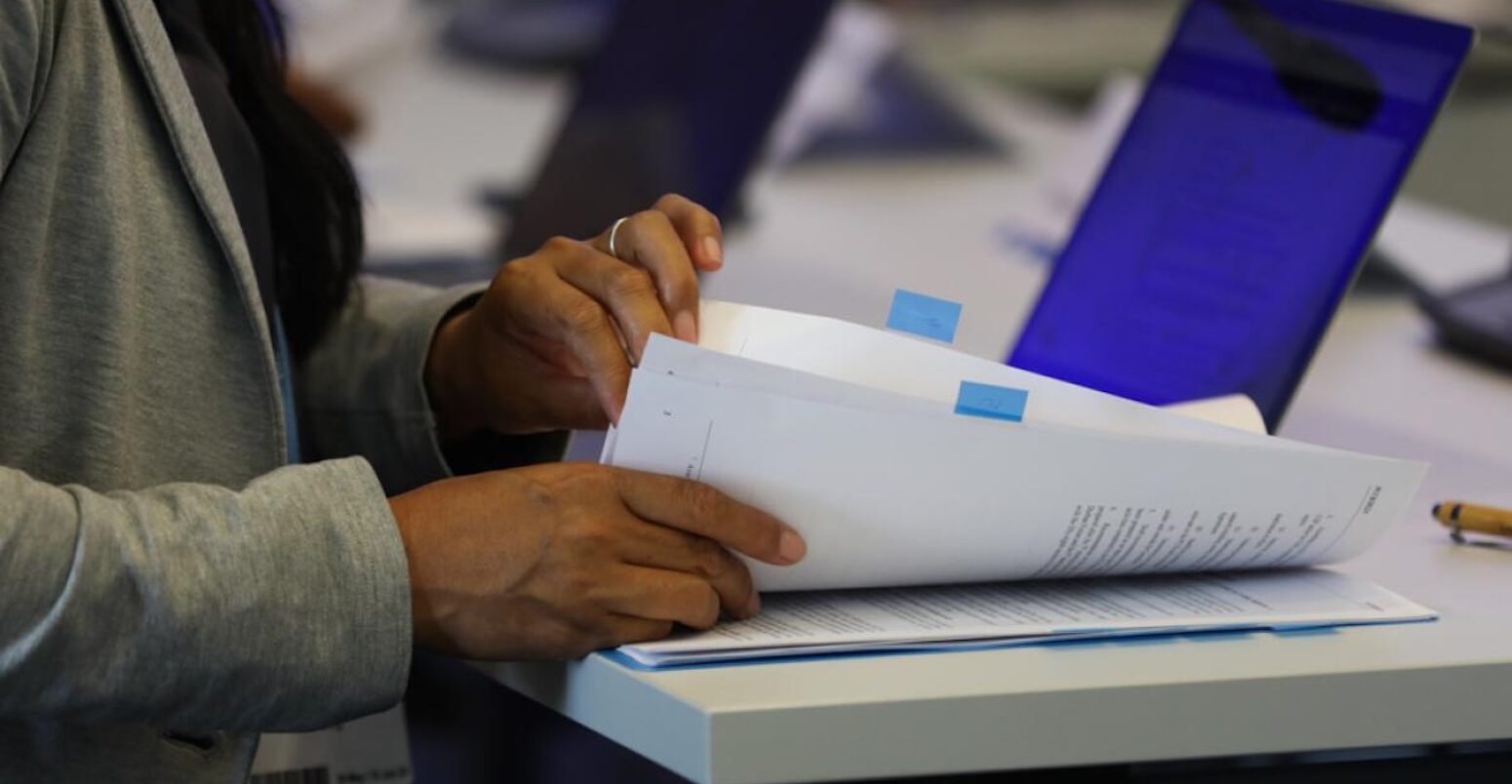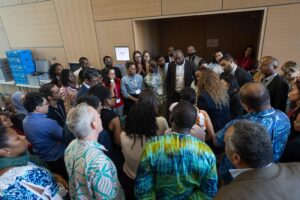
Interactive: Tracking negotiating texts at the COP30 climate summit
Multiple Authors
11.07.25Multiple Authors
07.11.2025 | 10:57amThe centrepiece of every UN climate summit is for countries to negotiate the wording of a large number of legal agreements – and COP30 in the Brazilian city of Belém is no different.
These texts are hashed out behind closed doors in the “blue zone” at the COP, where diplomats from nearly 200 nations haggle over every paragraph and each individual verb.
Over the course of the two-week summit, negotiators will be trying to reach consensus on more than 100 separate agreements – but, first, they must agree which issues are on the agenda.
The complexity of this process can make it challenging to keep track of what countries are fighting about and how negotiations are progressing.
Carbon Brief’s real-time text tracker, below, offers a helping hand by decoding the agenda and keeping a searchable record of every document for each part of the negotiations.
The first column of the interactive tracker lists the topic of each agenda item, with further columns including dates, page counts and links to the original PDFs.
The table is searchable via the interactive text box and can be sorted using the arrow icons.
Key negotiations at COP30 include those on the “global goal on adaptation”, as well as the question of whether or how to reform the COP process itself, a discussion that appears on the agenda under the innocuous heading: “Arrangements for intergovernmental meetings.”
While most of the items on the agenda are agreed in advance, parties can suggest late additions. These must be signed off before negotiations can begin, often resulting in an “agenda fight”.
Recent negotiations have all started with an agenda fight over two proposals from the Like-Minded Developing Countries (LMDCs) – a group that includes China, India and Saudi Arabia.
The LMDC proposals relate to the provision of climate finance by developed countries – under Article 9.1 of the Paris Agreement – and to what they describe as “unilateral trade measures”, a term understood to include the EU’s carbon border adjustment mechanism (CBAM).
The LMDCs have asked again that these issues be included on the agenda at COP30.
Ahead of the opening of the summit, Carbon Brief’s text tracker counts 111 substantive items on the agenda, not including procedural matters, such as the election of COP officials.
However, it is likely that not all of these items will ultimately end up being included.
The figure below illustrates the status of the COP30 negotiations overall, in a traffic-light format. Each agenda item is colour-coded according to its current status.
For topics shown in red, negotiators have not yet managed to put anything down on paper, perhaps because parties have fundamentally different views on how they should proceed.
For items in orange, negotiators are working on an “informal text”, which is an early draft setting out the views of different parties, but not yet expressed in formal legal language.
Once a draft legal agreement becomes available, topics will be colour-coded yellow. At this point, areas of remaining disagreement will be denoted in the text with [square brackets] and “options”.
As such, texts with many square brackets or options tend to be an indicator of a high level of disagreement between parties within this negotiation track. For this reason, the tracker table above counts and displays the number of outstanding brackets and options in each document.
During the course of the summit, negotiators may work through multiple iterations of text on each agenda item. These documents may include “bridging text”, designed to resolve differences of opinion and to find a “landing zone” that all groups can agree on.
Agreement is reached on a given topic once all brackets and options have been resolved, at which point the issue will be coloured green in Carbon Brief’s traffic-light chart.
Where agreement cannot be reached, discussions may be subject to “rule 16”, meaning negotiations are postponed until the next session. These topics are colour-coded grey.
The figure below gives an at-a-glance overview of the status of the main topics up for negotiation.
As parties narrow down the options and brackets towards the end of each summit, they start to generate “clean” texts, which contain no areas of disagreement and can be converted into “draft decisions” that are ready for formal adoption at the closing plenary of the meeting.
Finally, at the closing plenary, each draft decision must be gavelled through by the COP president, signifying its formal adoption as a legal agreement and outcome of the summit.
This last step is usually a formality, but dramatic exceptions are possible.
During the closing plenary at COP29, the president of the meeting failed to adopt a deal relating to the “global stocktake” from 2023, which had called for “transitioning away” from fossil fuels.
Carbon Brief also ran text trackers for COP28 and COP29.
Words by Simon Evans. Tracker maintained by Ho Woo Nam.





